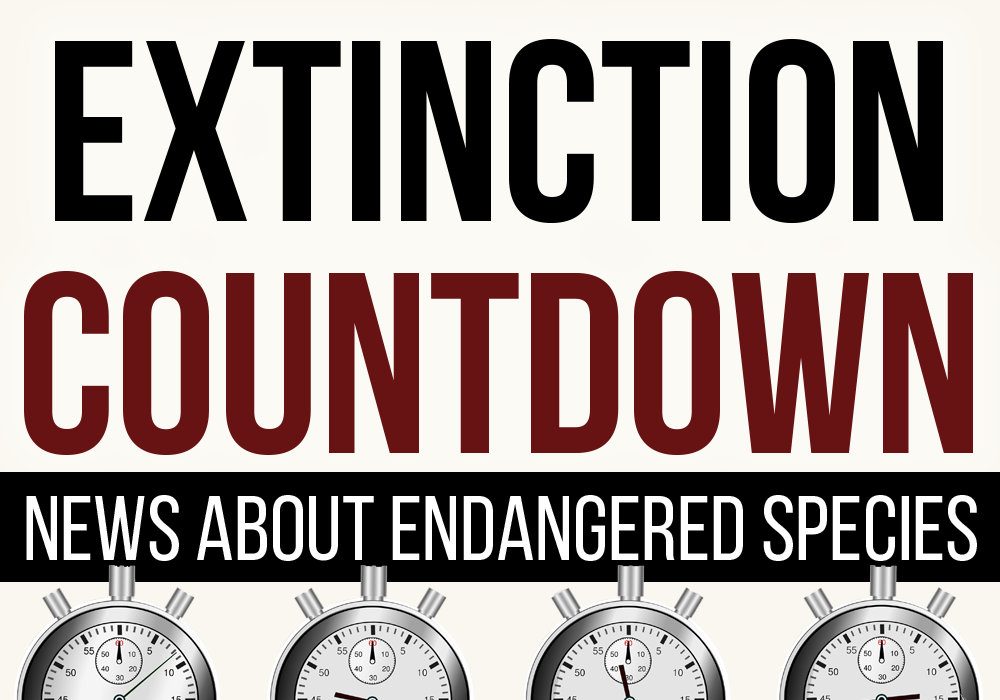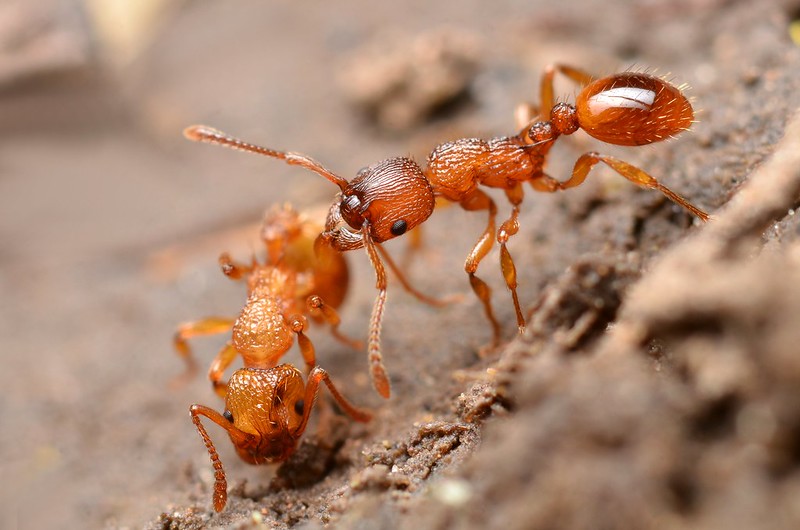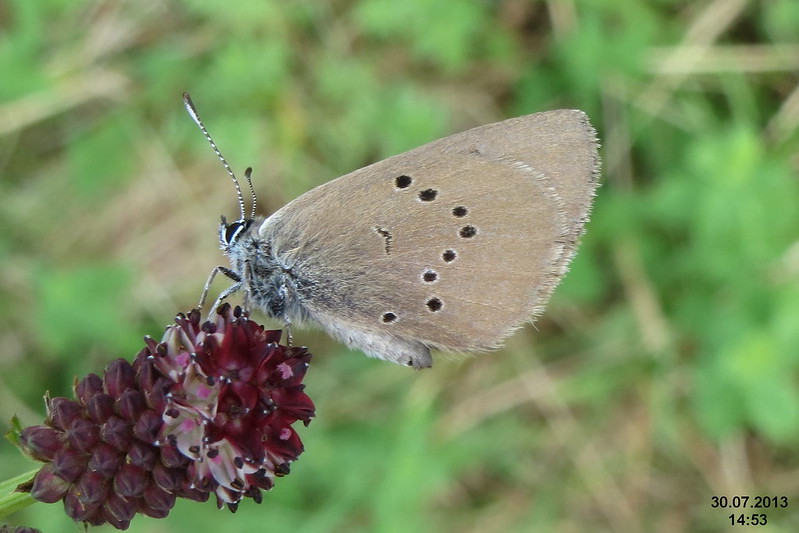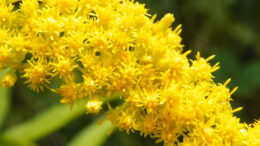 Another article from the “Extinction Countdown” archives. Originally published in 2016, but still painfully relevant.
Another article from the “Extinction Countdown” archives. Originally published in 2016, but still painfully relevant.
Here in North America, the ubiquitous plants known as goldenrod (from the genus Solidago) get a bad rap for causing spring allergies. They don’t, though — you’re thinking of ragweed. Goldenrod are actually incredibly valuable plants to their local ecologies, where they play host to literally hundreds of insects, providing shelter or food to bees, butterflies, spiders, praying mantises and all kinds of other species. They’re also culturally important; in the 18th century, American revolutionaries brewed goldenrod into so-called “liberty tea” as a protest against British taxation. (You can still buy goldenrod tea. It’s quite good.)
In other parts of the world, however, the relationship is more complex. Goldenrod is beloved as an ornamental plant, and many people grow it thinking local bees will produce honey with special medicinal qualities (FYI: that, like the allergies you think you’re experiencing, is misinformation).
But at the same time, goldenrod — a remarkably adaptable group of plants — have taken over fields throughout Europe and Asia, putting native species at risk wherever they grow. Goldenrod can reach more than six feet in height, so they block the sun from reaching smaller plants. They’re also prodigious reproducers, with each adult plant capable of releasing up to 10,000 tiny, wind-dispersed seeds. Finally, their roots produce a group of chemicals that can inhibit the growth of other plants around them, a process called allelopathy. Those three factors alone have been enough to label goldenrod as some of the world’s worst invasive plants.
Recent research shows that the effect of goldenrod invasions is even more dangerous than we previously knew. According to a paper published in 2016 in the Journal of Insect Conservation, invasive goldenrod in Europe are killing off ant and butterfly species.
Researchers from Poland’s Jagiellonian University discovered this insect decline by examining ten semi-natural grasslands located southeast of Krakow. Five of those meadows, the authors wrote, have “a serious problem with uncontrolled spreading of goldenrod populations.”
The researchers looked at a total of 60 plots within those meadows. And within each plot, they looked at ants, finding seven different species, the most common of which came from the genus Myrmica.
Well, they were the most common ants in the plots that didn’t contain goldenrod. In plots where the misplaced plants were present, Myrmica populations were reduced by at least 50% and up to 81%.

The most striking effect was on a species called M. scabrinodis, which the authors wrote should have adapted to the cool shade provided by goldenrod. Unfortunately goldenrod produces nectar later in the season than native plants, which apparently forces the ants to travel further and use more energy to search for food.
Why does that matter? For one thing, ants play an important role in the ecosystem. As the authors wrote in their paper, ants in general consume 3% of a meadow’s biomass each season and in the process affect the chemical composition of the surrounding soil. Their corridors and nests also serve to make the soil more porous, enhance decomposition, and allow colonization of microbiota and fungi that plants need as parts of their diet.
More pressingly, the three Myrmica ant species also play an important part in the lifecycle of three threatened or endangered butterflies in the Phengaris genus, which lay their eggs in ant nests and often feed on the ants. Two of the three species fully depend on this parasitic relationship for their survival.

The authors wrote that a change in Phengaris butterflies had not yet been observed in the area of the study, although warned that it could cause declines in at least two species. A more recent study, published in 2023, did document Phengaris butterfly declines in the same region due to goldenrod crowding out the insects’ traditional host plants.
Goldenrod is just one piece of the picture of Europe’s declining meadowlands. A paper published in 2014 estimated that Europe has lost as much as 80% of its ecologically important meadows over the past century due to development, mowing and cattle grazing.
The full effect of that meadow loss is still being determined, but the ants and the butterflies are just the beginning, and the goldenrod is still spreading. The authors warn that Europe needs to take serious attempts to stem goldenrod before the ecological damage can no longer be undone.
Previously in The Revelator:
Trump’s Border Wall Threatens Rare Butterflies and Native Bees



